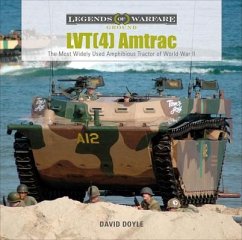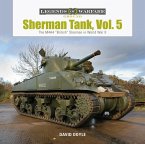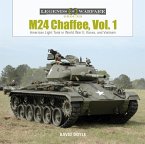Originally developed as a swamp rescue vehicle by millionaire philanthropists Donald and John Roebling, the LVT (Landing Vehicle, Tracked), or "Alligator," was widely used in the Allied island-hopping campaign in the Pacific during World War II. Powered by a mammoth aircraft-type engine, the LVT(4) could cross treacherous coral reefs, deep water, and swamps to land troops ashore. The LVT(4) also introduced the rear ramp, which when lowered allowed troops to rush out, rather than clamber over the tall sides as on previous models. Produced by Food Machinery Corporation (FMC), railway equipment manufacturer St. Louis Car Company, and automobile maker Graham-Paige, over 8,000 LVT(4)s were built during the war; today only a few remain. Through dozens of archival photos as well as detailed photographs of some of the finest existent examples of these vehicles, this iconic landing vehicle is explored, and its history is explained.
Hinweis: Dieser Artikel kann nur an eine deutsche Lieferadresse ausgeliefert werden.
Hinweis: Dieser Artikel kann nur an eine deutsche Lieferadresse ausgeliefert werden.








